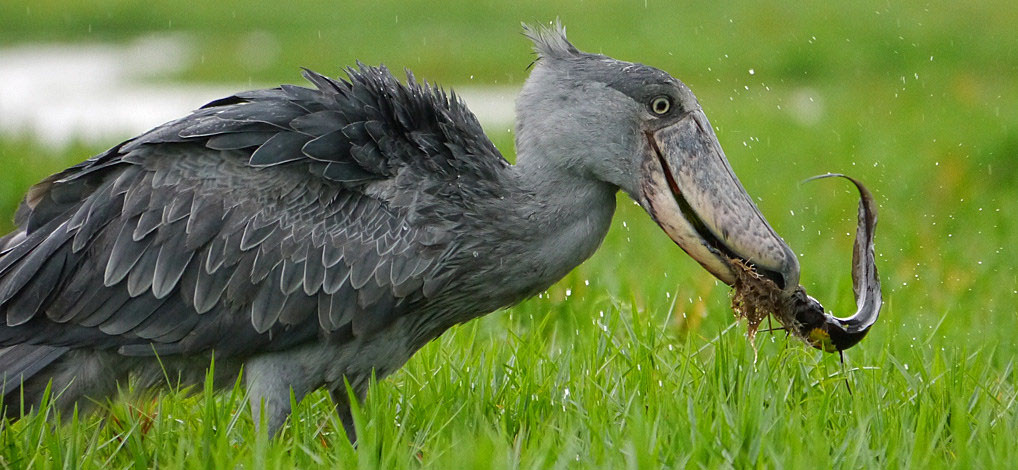
Ī pair of Shoebill Storks together in the raving mad For larger prey, such as crocodiles, turtles, rodents and even antelopes, a more acute crusade may be required, involving more beat of the shoebill ’ s huge wings. During such clashes with larger animals, the shoebill ’ s more aggressive nature becomes apparent.
#Shoebill eating crocodile generator#
While sometimes all goes to plan, and the food generator is caught during a silent swoop into the water by the shoebill ’ s giant beak, on occasion a bigger animal may put up a bite more of a crusade.

Shoebills are preciseness hunters that ambush raven mutely. Shoebill eating prey When do Shoebills get aggressive? They use their beaks to make a brassy noise that sounds like a rapid-fire machine gunman, which is more than adequate to startle humans who may be engaged in illegal trap or hunting pursuits. Although they are silent for much of the time, shoebills can sometimes be incredibly vocal, specially during the felt season or when warding off predators. They are ambush predators and will strike stealthily and without warning, using their powerful beaks to crush and rip apart their prey. Shoebills are well-known for their ‘death stare’, fixing their unblinking eyes on other birds or animals that may encroach on their territory, with the aim of scaring them into retreat. ĭespite their baleful looks, Shoebill Storks are by and large calm birds How do Shoebills protect themselves? Read on to find out more about these elusive, giant storklike birds and their deadly hunt methods, please do read on. Human hunting contributed significantly to the decay in numbers, and lone between 5,000 and 10,000 birds remain in the wild. Shoebills are a vulnerable species with few natural predators.

In fact, the opposite is more probably to be true. People are not at risk from shoebills, and there are no records of attacks on humans by these “ prehistoric atavist ” jam birds. Reading: Are Shoebills Dangerous? (All You Need To Know)


 0 kommentar(er)
0 kommentar(er)
